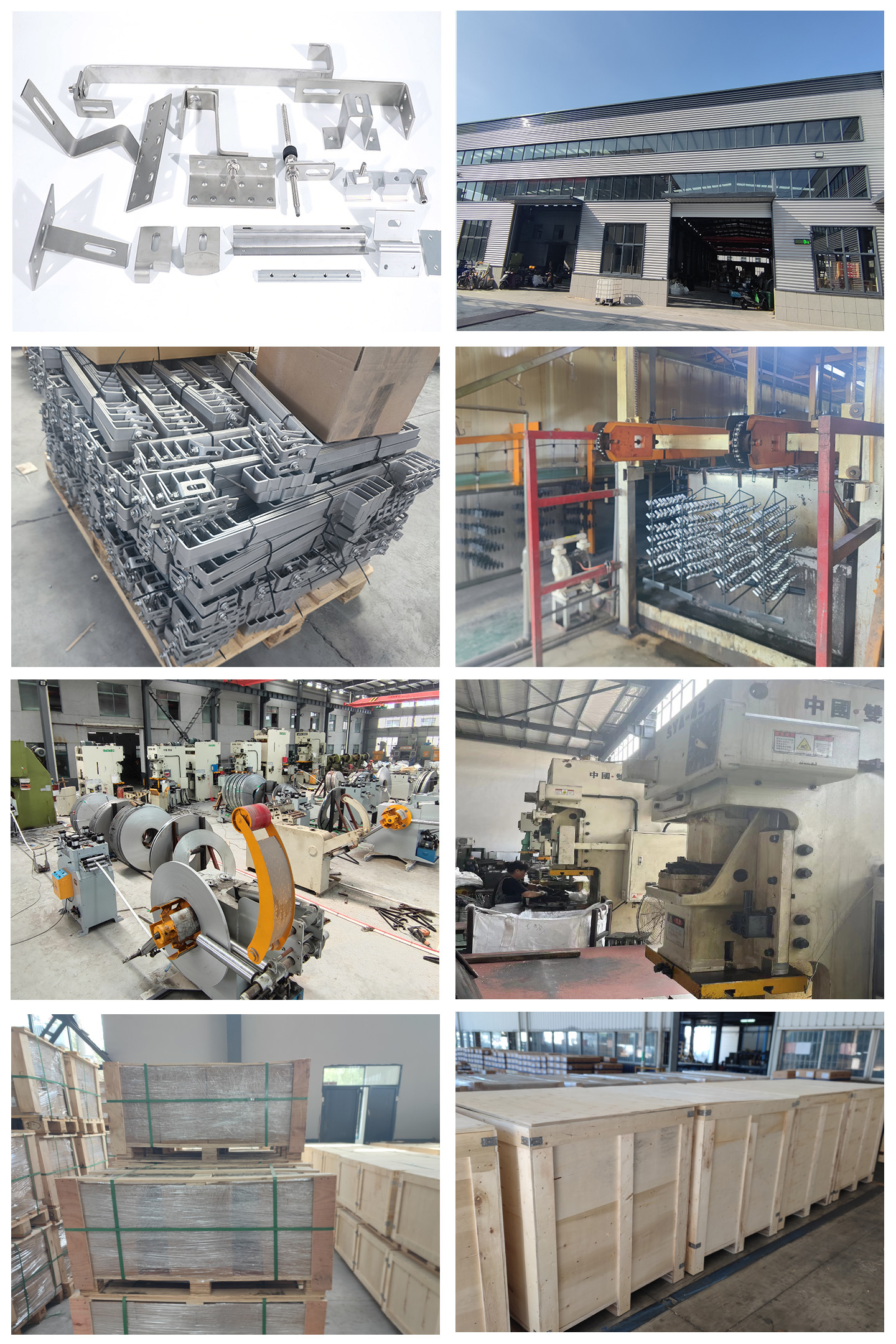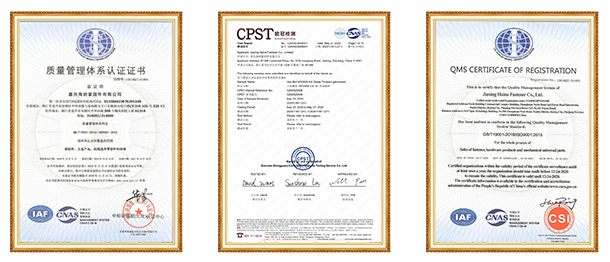- All
- Product Name
- Product Keyword
- Product Model
- Product Summary
- Product Description
- Multi Field Search
| Availability: | |
|---|---|
| Quantity: | |






HINA
HINA2024121702
Fixed shape: The fixed solar bracket hook has a specific shape, and its angle and size are designed according to the standard roof slope and solar bracket installation requirements. For example, in common slope roof installation, the bending angle of the hook will adapt to the inclination angle of the roof, generally between 10-60 degrees. This angle is to ensure that after the solar bracket is installed, the solar panel can achieve a good fit with the angle of sunlight, thereby improving the power generation efficiency.
Simple and compact: Its structure is relatively simple, usually consisting of a main hook body part and a fixed connection part. The hook body part is used to hook the roof purlin or other solid support structure, and the connection part has screw holes and other devices for bolting with the solar bracket. This compact structure makes it convenient and quick during installation, and the installer can understand and operate it more easily.




Standard roof structure: This hook is suitable for buildings with relatively standard roof slopes and structures. For example, in some residential or industrial plants, the slope of the roof meets the conventional building design specifications, the roofing material is the common color steel plate or tile, and the purlin distribution inside the roof is regular. In this case, the fixed solar bracket hook can play a good role. It can be quickly installed on the purlin to provide stable support for the solar bracket.
Large-scale installation: For large-scale solar power station construction, if the conditions of the roof are relatively consistent, the fixed solar bracket hook can improve the installation efficiency. Because of its simple structure, the installer can master the installation skills after simple training, and because of its standardized design, it can be purchased and installed in batches, thereby reducing the installation cost and time.
Function and effect
Fixed support: Its primary function is to fix the solar bracket tightly on the roof, provide stable and reliable support for the solar panel, prevent the solar panel from displacement, shaking or even falling during use, and ensure the safe operation of the photovoltaic power generation system.
Adjusting the angle: By reasonably selecting and installing different types of hooks, the installation angle of the solar panel can be adjusted to match the local sunshine angle, maximize the reception of sunlight, and improve the efficiency of solar power generation.
Haina is committed to providing customers with high-quality stainless steel standard fasteners and professional services to meet various engineering needs. We have a large amount of spot inventory to ensure fast delivery and save you waiting time. In addition, we provide the following value-added services to help your purchasing experience:
1. Free samples: provide samples for customer testing.
2. 3.1 Test report: quality test report that meets international standards.
3. Video factory inspection: support video factory inspection to demonstrate production process and quality management.

What is the spacing for solar roof hooks?
1. The spacing of solar roof hooks is affected by solar panel size and weight, roof structure and load - bearing capacity, and local wind and snow loads.
2. For residential installations, the spacing is usually 1 - 1.5 meters, but it can be adjusted according to weather conditions.
3. In commercial and industrial installations, the spacing depends on the size of the solar panel arrays and the roof's characteristics.
How do you anchor solar panels to a roof?
1. Inspect roof, plan layout, calculate needed hooks/mounts. 2. Install hooks/mounts on roof, attach rails. 3. Mount panels, make electrical connections and ground, then inspect and test.
How to attach solar panels to a roof without drilling?
1.Use ballasted mounts for flat roofs. These rely on weights to hold the solar panels in place without penetrating the roof. 2. Consider adhesive - backed mounts if the roof material and panel weight allow. But make sure the adhesive is suitable for outdoor use and can bear the load. 3. Some solar panel systems come with clamp - on mounts that can attach to the edges of the roof structure or existing rails without the need for drilling.
Fixed shape: The fixed solar bracket hook has a specific shape, and its angle and size are designed according to the standard roof slope and solar bracket installation requirements. For example, in common slope roof installation, the bending angle of the hook will adapt to the inclination angle of the roof, generally between 10-60 degrees. This angle is to ensure that after the solar bracket is installed, the solar panel can achieve a good fit with the angle of sunlight, thereby improving the power generation efficiency.
Simple and compact: Its structure is relatively simple, usually consisting of a main hook body part and a fixed connection part. The hook body part is used to hook the roof purlin or other solid support structure, and the connection part has screw holes and other devices for bolting with the solar bracket. This compact structure makes it convenient and quick during installation, and the installer can understand and operate it more easily.




Standard roof structure: This hook is suitable for buildings with relatively standard roof slopes and structures. For example, in some residential or industrial plants, the slope of the roof meets the conventional building design specifications, the roofing material is the common color steel plate or tile, and the purlin distribution inside the roof is regular. In this case, the fixed solar bracket hook can play a good role. It can be quickly installed on the purlin to provide stable support for the solar bracket.
Large-scale installation: For large-scale solar power station construction, if the conditions of the roof are relatively consistent, the fixed solar bracket hook can improve the installation efficiency. Because of its simple structure, the installer can master the installation skills after simple training, and because of its standardized design, it can be purchased and installed in batches, thereby reducing the installation cost and time.
Function and effect
Fixed support: Its primary function is to fix the solar bracket tightly on the roof, provide stable and reliable support for the solar panel, prevent the solar panel from displacement, shaking or even falling during use, and ensure the safe operation of the photovoltaic power generation system.
Adjusting the angle: By reasonably selecting and installing different types of hooks, the installation angle of the solar panel can be adjusted to match the local sunshine angle, maximize the reception of sunlight, and improve the efficiency of solar power generation.
Haina is committed to providing customers with high-quality stainless steel standard fasteners and professional services to meet various engineering needs. We have a large amount of spot inventory to ensure fast delivery and save you waiting time. In addition, we provide the following value-added services to help your purchasing experience:
1. Free samples: provide samples for customer testing.
2. 3.1 Test report: quality test report that meets international standards.
3. Video factory inspection: support video factory inspection to demonstrate production process and quality management.

What is the spacing for solar roof hooks?
1. The spacing of solar roof hooks is affected by solar panel size and weight, roof structure and load - bearing capacity, and local wind and snow loads.
2. For residential installations, the spacing is usually 1 - 1.5 meters, but it can be adjusted according to weather conditions.
3. In commercial and industrial installations, the spacing depends on the size of the solar panel arrays and the roof's characteristics.
How do you anchor solar panels to a roof?
1. Inspect roof, plan layout, calculate needed hooks/mounts. 2. Install hooks/mounts on roof, attach rails. 3. Mount panels, make electrical connections and ground, then inspect and test.
How to attach solar panels to a roof without drilling?
1.Use ballasted mounts for flat roofs. These rely on weights to hold the solar panels in place without penetrating the roof. 2. Consider adhesive - backed mounts if the roof material and panel weight allow. But make sure the adhesive is suitable for outdoor use and can bear the load. 3. Some solar panel systems come with clamp - on mounts that can attach to the edges of the roof structure or existing rails without the need for drilling.